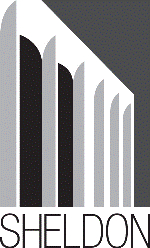Fine and Performing Arts, Hixson-Lied College of

Sheldon Museum of Art: Catalogs and Publications
Date of this Version
2011
Citation
Sheldon Museum of Art, JUNE 3-SEPTEMBER 18,2011
Abstract
In mathematics, a line is the geometric figure formed by a point moving along a fixed direction, and its major property is that it is one-dimensional. In art, however, line has much more than a single dimension. Lines are mutable and chameleon-like in character-they can be soft and seductively flowing, agitated and emotionally loud, or passively descriptive. Line also serves as the fundamental element of most drawings. In this exhibition, Dan Howard reveals his continuing fascination with, and mastery of, line. Composed not only of charcoal, graphite, and pen-and-ink drawings, but also of oil paintings, this array of works showcases the artist's fluency in drawing and represents just a sampling of his production over the past two decades.
Although drawing is often dismissed as preparatory in nature, it is in fact central to most visual enterprises. The revered neoclassical artist JeanAuguste- Dominique Ingres declared, "Drawing is the probity of art. To draw does not simply mean to reproduce contours; drawing does not simply consist of line: drawing is also expression, the inner form, the surface, modeling." To Ingres and to many others before and since, drawing constituted the bedrock of art. One only need look across the expansive history of art to see the truth of his assertion. Renowned artists such as Leonardo da Vinci, Albrecht Durer, Kathe Kollwitz, and Pablo Picasso produced breathtakingly affecting and impressive paintings, prints, sculptures, and works in other mediums, all of which stemmed from their enviable abilities as draftsmen. And drawing's importance is not limited to the West; consider the centrality of ink drawings to centuries of Asian art.
In Decisive Line, the primacy of drawing-and line in particular-is on full display. Most of the works on display here, especially those done in graphite or pen and ink, consist predominately of crosshatched lines. This is consistent with Howard's working methods over the course of his career, which got an early start. The artist was born in Iowa City in 1931 and majored in art as an undergraduate at the University of Iowa. After a short stint in the Air Force in the mid-1950s, he returned to the university, where he received his Master of Fine Arts (with a concentration in painting) in 1958. After moving through the ranks at Arkansas State and Kansas State universities, Howard came to the University of Nebraska-Lincoln in 1974 as a full professor and chair of the Department of Art, in which capacity he served until 1983. He retired in 1997 but has continued the vigorous practice that he established years earlier.


Comments
All images are copyright by the original artists. Publication copyright 2011 The Regents of the University of Nebraska